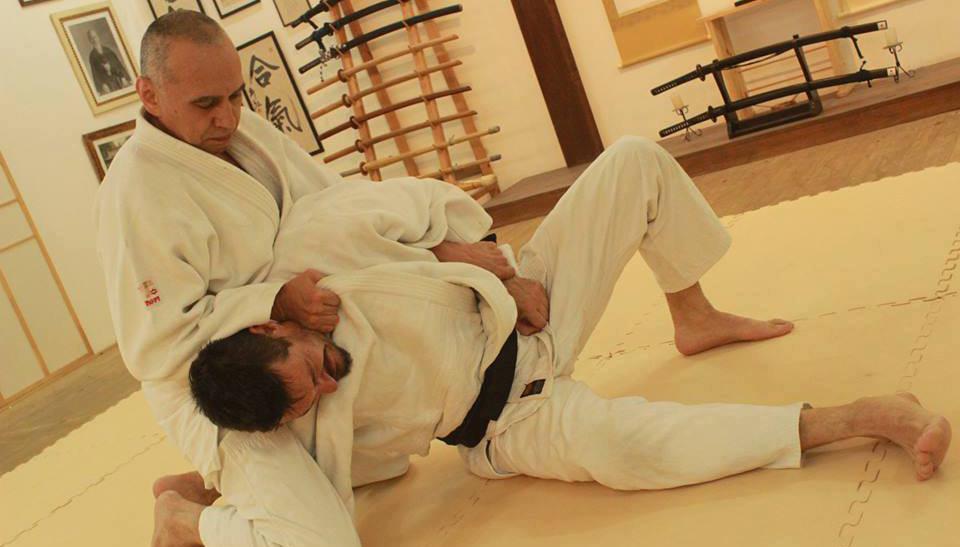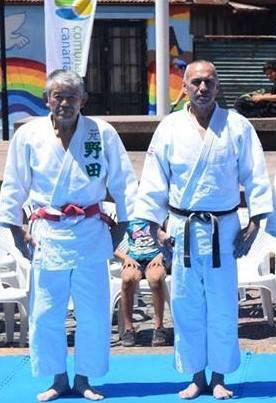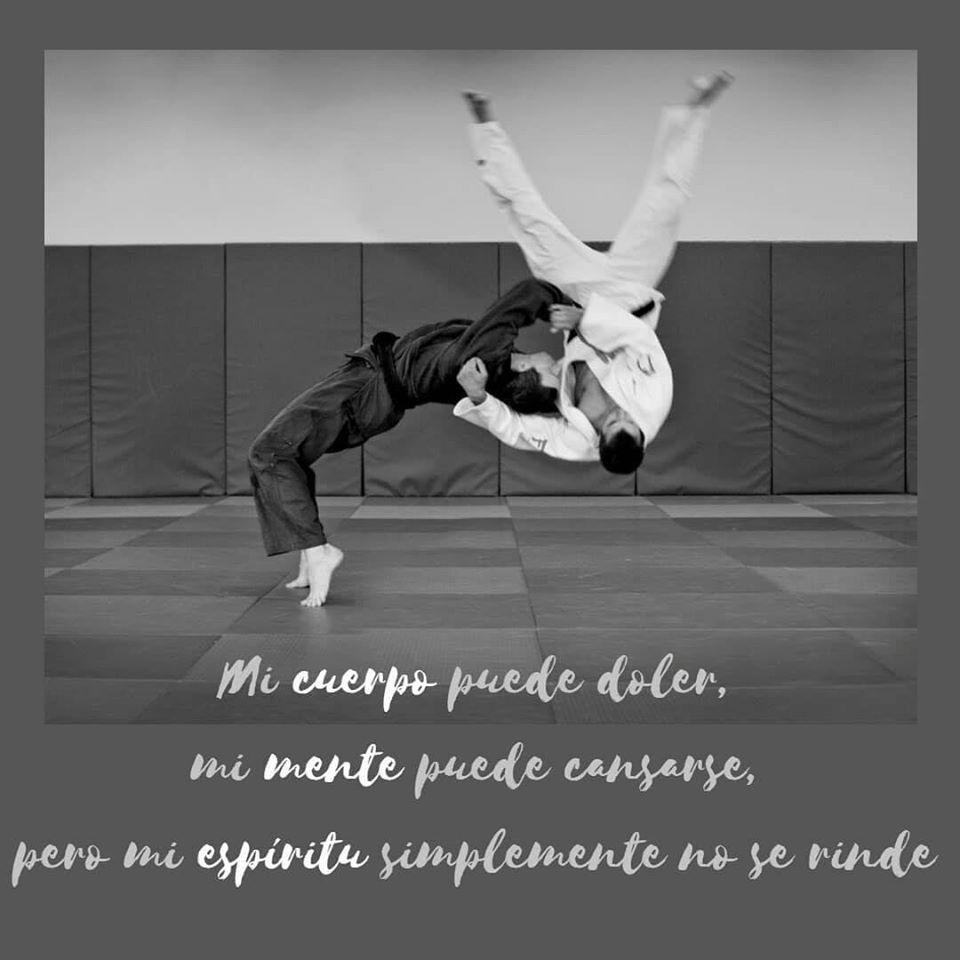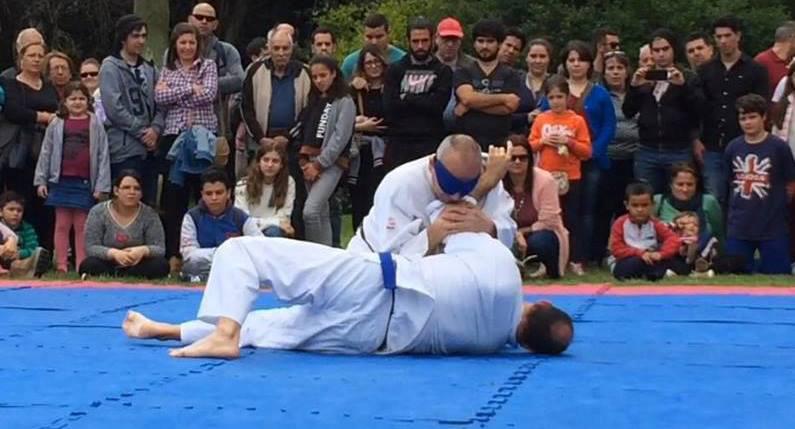
5 minute read
LEARN, TEACH and ENJOY JUDO PROF. Marcelo Ehrlich
Hello El Camino readers!
In this third installment, we extend the point made in the previous note, about the way of learn, teach and enjoy Judo. We had seen that the work of Randori (Free Practice), Kata (Pre-established Forms) and Shiai (Competition) is recommended, supported by the training of the body and mind, emphasizing moral development, to achieve the best results, always thinking about the application of Judo to daily life and the welfare of society. Of course, not everyone understands it that way, or seeks this balance, or thinks of a contribution to the society in which we live. Everyone can take advantage of Judo in his own way, without expect others to do so. The Randori, as a development and study of combat or free practice, where the application of the techniques learned and repeated countless times on someone who is resist, I think it is the most complete. Where I'm up against another person, trying to also impose their throwing, dislocation, retention and strangulation techniques,
Advertisement
LEARN, TEACH and ENJOY JUDO
Prof. Marcelo Ehrlich
about me. The topic is so broad that we will only give a screenshot, a small sample of what we can do, especially for people outside Judo. The objective is to develop attack tactics, dodges, defenses, counterattacks, blocks, within the rules of engagement in Judo. Here we are talking about a fight regulated by the operation of what can be done and what should not be done, always seeking not to harm the partner. Of course, if it is a training for the security and self-defense area, the mentality and limits will be changed and adapted to that circumstance. very topic important that we will develop later. To study the techniques of Nage waza (Throws), Tori (The one who performs the action) develops in three stages: 1st. Kuzushi: Imbalance, seeking to alter the stable position of Uke (The one who receives the action). 2nd. Tsukuri: The entrance of the technique, or how I position my body in relation to the other's body. 3rd. Kake: The throw itself, throwing Uke and hitting him on the ground. This would be the ideal format of the movement, and it is divided in this way for its better study and fix, when there is something wrong on launch. The theory for the best application is "The best use of physical and mental energy" and "The least maximum performance effort. Over the years and increasing physical and competitive development, it is also seen as on occasion, the first step (Unbalance) is skipped, and only the other two are performed. But what always works is the “Imbalance, Entry, Release” format. In Randori, I must have control over my throw, in all three phases, always taking care of



Uke, I can make an explosive throw, strong and fast, with a crashing fall, but As long as you take care that his body falls under control, he will never get hurt. And at the same time that control on the fall of it, it will allow me to work in Ne waza (Ground Techniques). By the time I study throwing techniques, I have already been taught how to stand, how to move the tatami, to fall, to grab the other, etc. And I start with the Uchikomi (Repetition of techniques), with a Uke standing without moving, enter and go out countless times, improving coordination, speed, technique itself. Bilaterality is an important thing in Judo, I can perform the techniques from the left and the right. The Kumi kata (Forms of grip), is of the utmost importance to impose myself and initiate the l a u n c h i n g . The second stage of the Uchikomi is in movement, the same technique that I did with the partner standing in place, now we do it moving, forward, backward, turning, and always changing grips and making left and right tackles. So far I had a collaborator colleague, who let the launch in, to allow my improvement, at this stage. Now Tori will seek to enter the technique, while Uke will only he defends himself, dodging, blocking, moving to avoid leaving a fixed target. then they will go changing roles, as in a role play, the one who attacked, now defends and vice versa, thus both train the different possibilities. Already in the Randori stage, properly speaking, both attack, defend, dodge, block, they move so as not to offer weaknesses, they continually change holds, they push, they bring, they spin… They fall and get up, fall and get up, without shame, without imposition of ego. There is not winners or losers, just continuous improvement. And they change companions and again Randori, and more Randori, it is part of the mental, physical and moral training. The Randori begins and ends with the greeting! It is said that Judo begins and ends with a Greetings, always respect in our hearts! The same thing happens in the Randori on the ground, where I try to apply the techniques of Osaekomi waza (Immobilization), Kansetsu waza (Dislocation) and Shime waza (Strangle). And the same will happen in the complete Randori (Judo foot-Judo floor), throwing and taking advantage the fall, to continue looking for the imposition on the rival. And I will learn the different Kuzure (Variants) of each technique, similar but different, adapted to each situation, and I will learn (Renraku waza) combine and/or (Renzoku waza) chain my special technique with another followed (Either because Uke neutralized it or because it moved), I will use another technique, to cheat Uke and enter my special (Cheating is part of the combat strategy). I will start studying the Kaeshi waza (Kickbacks) for each technique, when I am attacked. Little by little I will be able to project the study of the Randori, the Shiai (Competition), if I am interested and is my intention! And I will learn the psychology of combat, strategy, tactics, methods, body language, handling of the conflict, etc. And I will realize that all that training and approach is absolutely applicable to me. Personal life. That is why the motto of JUDO SAKURA, "JUDO FOR LIFE". See you at the Dojo and in El Camino magazine! Prof. Marcelo Ehrlich.







